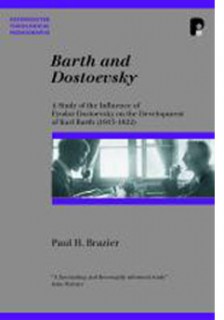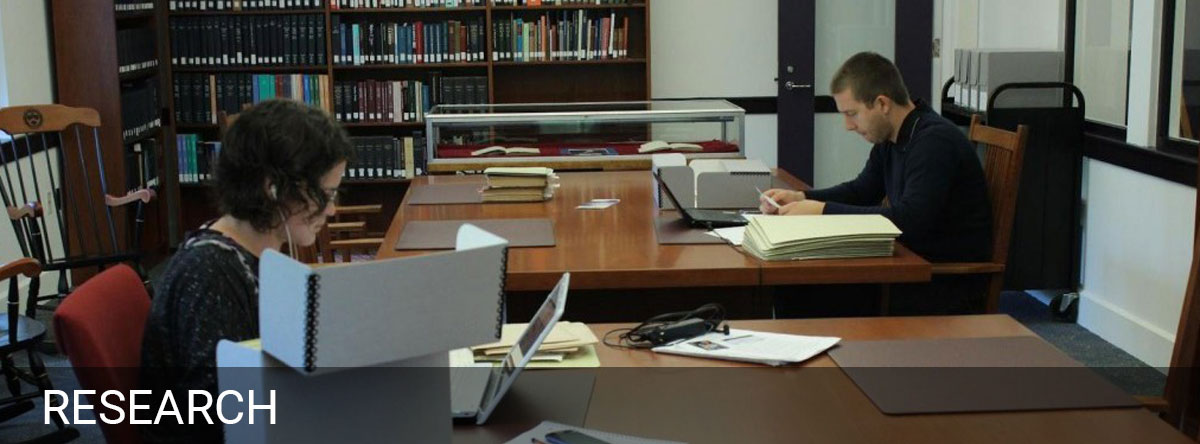 P. H. Brazier, Barth and Dostoevsky: A Study of the Influence of the Russian Writer Fyodor Mikhailovich Dostoevsky on the Development of the Swiss Theologian Karl Barth, 1915-1922 (Colorado Springs, CO: Paternoster, 2007), xix + 245 pp. $39.99 (paperback)
P. H. Brazier, Barth and Dostoevsky: A Study of the Influence of the Russian Writer Fyodor Mikhailovich Dostoevsky on the Development of the Swiss Theologian Karl Barth, 1915-1922 (Colorado Springs, CO: Paternoster, 2007), xix + 245 pp. $39.99 (paperback)
Reviewed by David W. Congdon (October 21, 2008)
In his forward to Paul Brazier’s new book, Stephen Holmes begins by stating, “The book you have before you might surprise you” (xvii). Holmes was apparently skeptical about the prospect of a book looking at an historical period in Barth’s life already thoroughly covered by Bruce McCormack. Holmes goes on to say that he “expected little more than a conversation with, and perhaps some footnotes to, McCormack,” but that Brazier had convinced him that there was “extraordinarily interesting data” still waiting to be explored. The result of this exploration was Brazier’s dissertation, originally entitled “Die Freiheit in der Gefangenschaft Gottes”: The Nature and Content of the Influence of Dostoevsky on Karl Barth, 1915 to 1922, now published in the line of Paternoster Theological Monographs under the title, Barth and Dostoevsky. While the book illuminates and examines certain dimensions of Barth’s life that have been ignored by most Barth scholars, the data is not always as surprising as one might expect, nor is the data presented in a very accessible manner.
Brazier describes the primary aim of his project as an attempt “to demonstrate that exposure to the writings and thereby the theology of the Russian writer Fyodor Mikhailovich Dostoevsky affected the development of the theology of Karl Barth” (2). More concretely, Brazier seeks to show that Dostoevsky’s beliefs influenced Barth’s theological anthropology, and specifically his understanding of sin and grace. Brazier locates this influence primarily in the period of August 1915 to August 1916 and secondarily in 1918-21, during the rewriting of Barth’s Römerbrief. McCormack’s research is taken for granted: “This work takes the conclusions of Bruce McCormack as a given and as a base line. Nothing in this work contradicts his – merely fills the gaps” (3).
The book is divided into seventeen chapters over four major sections. In the first section, Brazier rehearses the broad outlines of Barth’s “Wendung und Retraktation” (turn and revision), a phrase which Brazier adapts from Barth’s essay, “The Humanity of God.” This section is essentially a summary of McCormack’s historical study, though Brazier here highlights what he calls the “apophatic Barth.” Brazier uses the concepts of apophaticism and negative theology rather loosely. He says that in this period, and particularly in the essay, “Wartime and the Kingdom of God” (1915), we see “Barth’s early use of negation in relation to speaking about God” (20). Brazier distinguishes this from the negation of “Buddhist apophatism,” arguing that Barth uses negative language to reject natural theology and human religiosity. God is “not a metaphysical essence” but the “pure Ursprung(origin)” (23). While we certainly see a prominent use of negation, describing this early Barth as “apophatic” is a bit misleading since he does not have an apophatic theological method. One could just as well call him dialectical, as McCormack does, and avoid the confusing connotations of classical apophatic theology, represented by someone like Pseudo-Dionysius.
In the second section, the book examines Barth’s understanding of sin and grace. The section begins by exploring Dostoevsky’s dialectical theology, with special attention given to Crime and Punishment, since this was the book that dominated Barth’s attention during 1915-16 upon the recommendation of pastor and close friend, Eduard Thurneysen. On August 18, 1915, Barth wrote to Thurneysen: “Yesterday I spent the entire day reading Dostoevsky’s Crime and Punishment – I wanted to become completely wise about this Russian” (31). It is precisely this reading of Dostoevsky that Brazier finds lacking in other studies of Barth. Brazier then looks at Barth’s address, “The Righteousness of God,” written “a matter of months” after first reading Crime and Punishment, and he finds important correspondences between Dostoevsky and Barth’s evolving theology. In particular, Brazier identifies the antinomies in Dostoevsky between God and the world, between sin and grace, as a catalyst for Barth’s forensic soteriology and his dialectical doctrine of God as “wholly other.” The rest of the section assesses Dostoevsky’s “early influence” on Barth, up through the first edition of the commentary on Romans (86-88). According to Brazier, Dostoevsky’s Crime and Punishmentand The Idiot join Hermann Kutter, Leonhard Ragaz, and the Blumhardts as the key influences in the early stage of Barth’sWendung und Retraktation in 1915.
Dostoevsky’s most important influence, however, concerns his views on sin and grace. Dostoevsky understands sin as the attempt to be like God (eritis sicut deus)—represented in Crime and Punishment by Raskolnikov—while grace involves the acknowledgement of our unworthiness of divine mercy and the acceptance of divine judgment—represented by Sonya. The critique of the former (pursuit of being like God) takes the form of a radical critique of religion for both Dostoevsky and Barth, both of whom connect religion with the Tower of Babel. The praise of the latter (acceptance of divine mercy-in-judgment) takes the form of an existentialist gospel in which, by means of the conscience, the reality of God interrupts the human individual in an eschatological krisis and propels her toward repentance. We see this in the story of Raskolnikov, who has an encounter with the living God via Sonya and experiences “a guilt that could only be assuaged by giving in to its promptings” (60). Brazier notes how the theme of Babel does not appear in Barth’s writings until the latter half of 1915, and since Gen. 11:1-9 does not come up in the Swiss Reformed Church lectionary, the evidence suggests that Dostoevsky instigated Barth’s interest in this motif—one that remains throughout his theological career. Barth and Thurneysen would later augment their theological insights through the reading of Dostoevsky’s later works, particularly The Brothers Karamazov. Ivan Karamazov, for example, is another example of trying to be like God, except that his story ends in insanity, while Raskolnikov finds forgiveness. Overall, Brazier argues that Dostoevsky “points towards the understanding of sin and grace that Barth found in Luther and the Reformers” at a later time (63). Brazier finds confirmation of this thesis in Barth’s 1928 lecture, translated as “Roman Catholicism: A Question to the Protestant Church,” in which we read:
Where has there been preserved the insight that there is no other grace except the free pardon of criminals, grace in judgement? Is it not shameful that we needed to have this truth retold to us by the Russian Dostoevsky? If we have refused to hear it from our Reformers who really understood it better than Dostoevsky, are we then still Protestants? (65-66)
The third section of the book is perhaps the most interesting, since here Brazier focuses on Thurneysen as pastor-theologian, giving special attention to his book, Dostoevsky: A Theological Study. Since Thurneysen all too often becomes a footnote in Barth studies, it is refreshing to have several chapters devoted to his life and work that stress the mutuality of respect and influence between him and Barth. While Thurneysen is most well known for his magnum opus, A Theology of Pastoral Care, Brazier focuses his attention not only on the books of sermons that Thurneysen and Barth co-authored but also on the popularity and importance of Thurneysen’s book on Dostoevsky, published in 1921. In a short seventy-seven pages, Thurneysen examines theological anthropology and epistemology through a close reading of Dostoevsky’s novels, arguing that the central issue is the problem of God. According to Thurneysen, “God is God. That is the one central recognition of truth for Dostoevsky” (111). Of course, the problem of God is also a problem of humanity. Here, again, the focus is on the “existential relationship between God and humanity” (103): negatively, this involves rejecting religion as a result of the Fall; positively, however, this involves affirming sobornost, which is the Russian word for koinonia or communion. An “existential gospel,” according to Brazier, presents the reality of the human condition so that one comes to see that communion with God alone is the answer to the question of sinful human existence. Looking back on Thurneysen’s influence in 1958, Barth would later write that “he was the one who first put me on the trail of . . . Dostoevsky without whose discovery I would not have been able to write either the first or the second edition of the commentary on Romans” (75).
The fourth and longest section of the book examines the influence of Dostoevsky during the rewriting of the Romans commentary, this being the later stage of Barth’s “radical turn” from liberalism. Here the focus shifts from Crime and Punishment to The Brothers Karamazov in terms of central texts, and from Kutter and the Blumhardts to Kierkegaard, Franz Overbeck, and Luther in terms of primary influences. In this section, Brazier spends most of his time going through each reference to Dostoevsky in Der Römerbrief, including lists and graphs to show how often Dostoevsky is mentioned in relation to other figures. Brazier argues that, along with the other figures mentioned in the commentary, Dostoevsky provides “an illustration of life under the Gospel” (169).
While this is the longest section of the book, it is also the least polished and the most underdeveloped. For example, in a chapter on Kierkegaard and Dostoevsky, Brazier repeatedly emphasizes that “Barth places the two of them together in the same sentence [regarding his major influences] in his preface to the second edition” of Romans (165). Brazier thus concludes that “it is not really possible to separate the two,” and that any “definitive definitions of the influence of Kierkegaard must now be seen as relative” (169). While it is certainly true that Kierkegaard’s influence has been overstated by many scholars, any argument that depends so explicitly upon the formal placement of two names in an author’s preface raises red flags—even if the material itself withstands scrutiny. Furthermore, most of these later chapters are little more than a string of quotes from Der Römerbrief organized around certain themes, and terms like “hunger for eternity” (Ewigkeitshunger) and “the paradox of Christlikeness” are mentioned but not adequately explained. The final chapters that summarize the book’s central themes—theological anthropology, the critique of religion, and theological epistemology—are also the shortest. This leaves much to be desired in terms of cumulative analysis, and one gets the distinct impression that the author just ran out of steam by the end of this project.
A more significant problem arises in the chapter on Kierkegaard, where Brazier says that in the same way Kierkegaard moves from paradox to faith, so too “Barth moves from the critically realistic dialectical theology (characterized by an acceptance of paradox, dialectic, negation, the via dialectica that establishes him as a theologian of rank) to the mature work of The Church Dogmatics based on the analogia fidei (but still dialectical to a degree)” (169). There are numerous problems with this sentence. For starters, it directly contradicts McCormack’s thesis, even though Brazier earlier said that “nothing in this work contradicts” McCormack’s conclusions. McCormack argues that Barth’s theology after his “turn” from liberalism is, until the end, a critically realistic dialectical theology. McCormack’s whole project is a refutation of Hans Urs von Balthasar’s thesis that Barth turns from dialectic to analogy. Brazier seems to nod in McCormack’s direction by saying that Barth remains “dialectical to a degree,” but otherwise seems wholly opposed to McCormack.
In the conclusion to the book, Brazier asks the question, “Is Barth influenced by Dostoevsky, or does he simply use the writer’s ideas illustratively?” (204). While he goes on to assert that “it is fair to say that Dostoevsky was an influence and was not simply used illustratively,” the original question is overly simplistic and presents a false dichotomy. If we go through the book, we notice that Brazier speaks repeatedly of Barth’s “illustrative” use of Dostoevsky (e.g., 158, 169, 172, 177, etc.). In one of those passages, Brazier says the following: “These references are sometimes illustrative but behind the inference is an idea that changed Barth’s thinking” (174). And later he speaks of “the use illustratively and the influence of Dostoevsky” (183). These more nuanced statements presuppose that illustration and influence need not be mutually exclusive. Of course, while Dostoevsky’s ideas were influential for Barth, they were not exclusively found in Dostoevsky. We have to see Dostoevsky as part of a wider array of thinkers and writers who all contributed in various ways to Barth’s development. Notwithstanding his earlier statement, this seems to be precisely where Brazier ends up, when he writes that “despite the use, illustratively, during the rewriting ofDer Römerbrief…Dostoevsky must be grouped with Christoph Blumhardt, Hermann Kutter, and Swiss Religious socialism in the pre-biblical turn of Barth’s theological Wendung und Retraktation– specifically the year of the new starting point (1915). In the final analysis Dostoevsky is a stepping-stone, as much as a detour” (206).
At the end of the day, two competing interests pull Brazier’s book in different directions: one seeks to demonstrate the importance of Dostoevsky to Barth’s theology (emphasizing difference), while another acknowledges that Dostoevsky is one among many influences (emphasizing similarity). Granted, both need to be held together in a kind of dialectical tension. There is a sense, as Barth himself acknowledges, in which Dostoevsky was instrumental in paving the way for his recovery of the Reformers’ theology. At the same time, Dostoevsky was not alone in his influence, and once Barth did finally turn to the Reformers, Dostoevsky almost immediately drops out of the scene. The problem is that this tension leads Brazier to make statements that are sometimes misleading or confusing.
Besides issues of clarity and consistency, there are issues also with comprehensiveness and organization. While the book does not seek to be a comparative study between Barth and Dostoevsky, one does wish that Brazier had engaged more of the secondary literature on Dostoevsky. For example, Brazier does not use Joseph Frank’s seminal five-volume work on Dostoevsky, which is the definitive treatment of his life and works. Consequently, we do not learn whether the interpretations of Dostoevsky by Thurneysen and Barth are indeed faithful readings, or whether they perhaps anticipate future work on Dostoevsky by literary scholars. In terms of organization, the book is often confusing. As I said already, Barth and Dostoevsky is not a comparative study between the two figures, but neither is it exactly a genetic-historical study of Barth’s development. The book is a combination of both approaches, but the result is only somewhat successful. As a result, the first section is more historical, while the second section is more comparative. In general, Brazier has organized the material in this monograph in a roughly chronological order, beginning with Barth’s turn from liberalism and concluding with the rewriting of The Epistle to the Romans. But the chapters themselves are organized topically. As an example, a chapter on Barth’s later reflections on Dostoevsky’s influence comes in the second section instead of at the conclusion because this chapter locates the primary influence in terms of Barth’s understanding of sin and grace, which is the theme of section two. In other words, while the overall project moves diachronically, the book is organized synchronically.
One final criticism has to do with the book’s lack of editing. Here the blame must fall on Paternoster as well as Brazier. Many sentences lack periods and other punctuation marks, others are incomplete or lengthy run-ons, and German text is only occasionally italicized without any consistent pattern.
These criticisms notwithstanding, Barth and Dostoevsky does a fine job of pinpointing when and how Barth was influenced by Thurneysen and Dostoevsky. Brazier uncovers very interesting statements in Barth’s correspondence and in some of his later lectures that reflect back on this early period in Barth’s life. He shows that Dostoevsky predates Barth’s turn to the Bible and the Reformers, and helps pave the way for these later influences. The book is certainly not for everyone. Those casually interested in Barth’s theological development or the ideas found in Dostoevsky’s novels will want to turn to the studies of McCormack and Frank, respectively. Brazier’s study is written for the serious reader of Barth who wishes to understand why Dostoevsky’s name appears in Barth’s writings and what significance Dostoevsky had for the early phase of Barth’s dialectical theology.
The views expressed here are strictly those of the author; they do not necessarily represent the views of the Center for Barth Studies or Princeton Theological Seminary.


